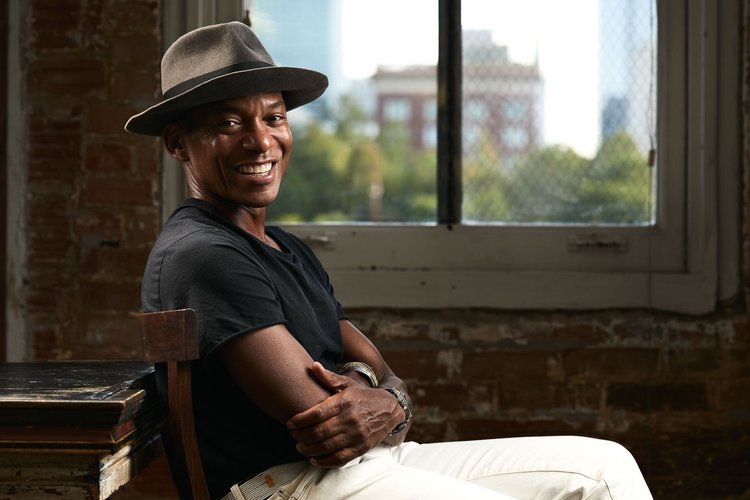Artist, author, and anthropologist Marlon F. Hall, a Spring 2024 Interdisciplinary Artist-in-Residence with UW–Madison’s Division of the Arts and the School of Education’s Art Department, is presenting an exhibition, “Can I Tell You a Story?: From a Door at the Center of the Table,” in the Memorial Union’s Main Gallery through May 17.
The exhibition demonstrates the beauty of human connectedness found at the intersection of anthropology and art, which brings healing to “communities that have experienced political, cultural, or systemic trauma.”
Hall makes tables to make meals as an art practice. At the center of these tables are reclaimed doors made of native wood from the communities where he finds himself. He invites to the table a cross-pollination of people — 16 at a time — to engage in the beauty intrinsic to being human.
Original musical composition, rich culinary art, and intentionally designed conversations drive a night of wonder experienced by people who are different and share a heart for the community. At the table, they cannot talk about what they do, only who they are and why they exist.
As an artist-in-residence at UW–Madison, Hall has brought his meals as an art practice to campus and to the greater Madison area, inviting 250 Wisconsin households to participate in a new dinner party concept called the Mosaic Dinner Movement.
According to a recent Madison Magazine story, “Hosts are instructed to invite at least four individuals that come from different backgrounds — cultural, vocational, ideological — who might not otherwise know each other. The meal then serves as a ‘platform for cultural exchange and connection,’ and above all, an opportunity to share stories.”
Hall shares more about his idea for “Healing Communities, One Meal at a Time” in this interview on WORT 89.9 FM. He was also interviewed by 608 Today about the Mosaic Dinner Movement.
The Mosaic Dinner Movement is not Hall’s only work in Madison. Learn more about his Dear Black Future project, which aims to collect as many letters as possible, detailing aspirations for the Black community in just four words, in this Wisconsin State Journal article.

